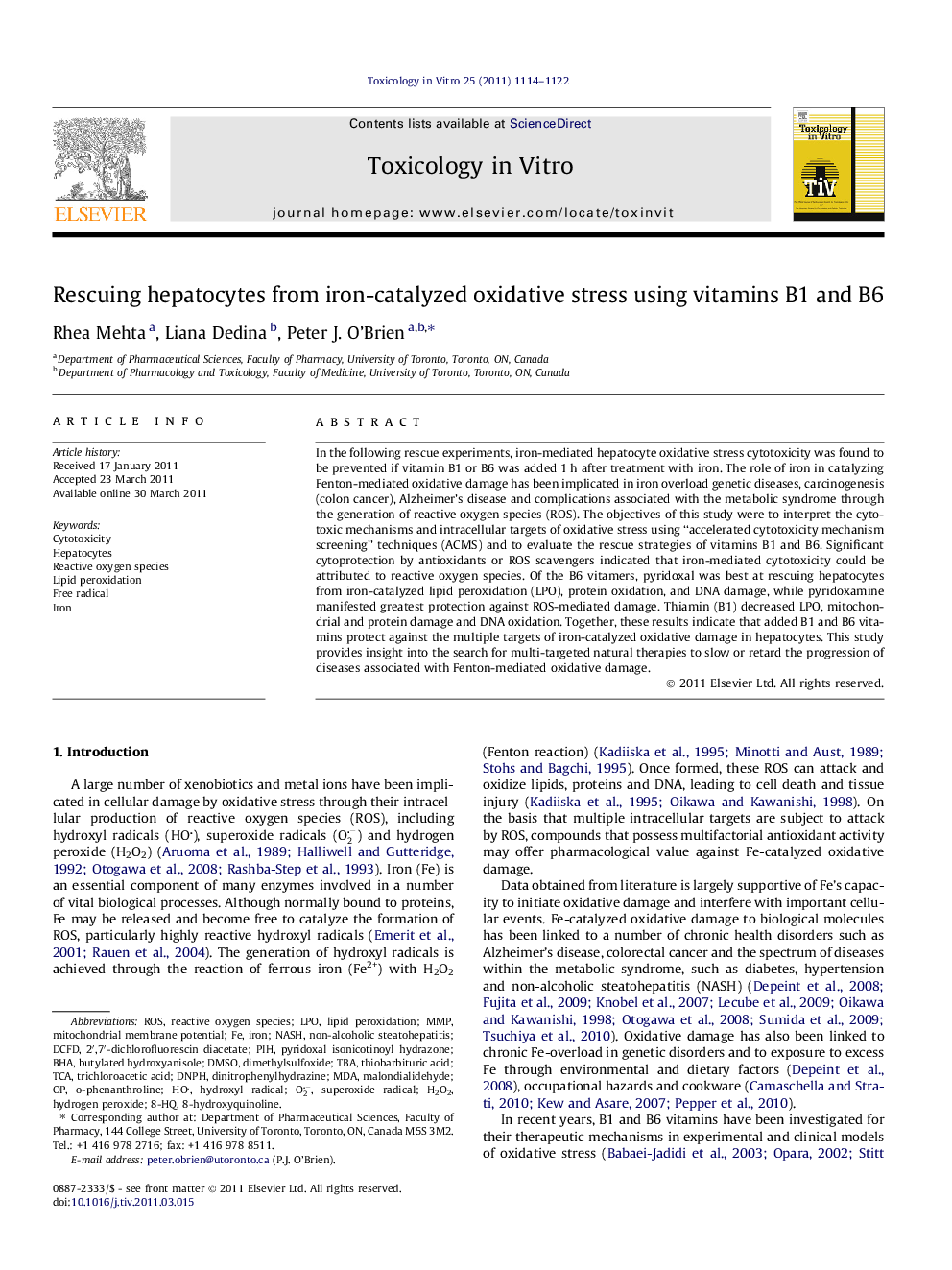| کد مقاله | کد نشریه | سال انتشار | مقاله انگلیسی | نسخه تمام متن |
|---|---|---|---|---|
| 2602622 | 1133790 | 2011 | 9 صفحه PDF | دانلود رایگان |

In the following rescue experiments, iron-mediated hepatocyte oxidative stress cytotoxicity was found to be prevented if vitamin B1 or B6 was added 1 h after treatment with iron. The role of iron in catalyzing Fenton-mediated oxidative damage has been implicated in iron overload genetic diseases, carcinogenesis (colon cancer), Alzheimer’s disease and complications associated with the metabolic syndrome through the generation of reactive oxygen species (ROS). The objectives of this study were to interpret the cytotoxic mechanisms and intracellular targets of oxidative stress using “accelerated cytotoxicity mechanism screening” techniques (ACMS) and to evaluate the rescue strategies of vitamins B1 and B6. Significant cytoprotection by antioxidants or ROS scavengers indicated that iron-mediated cytotoxicity could be attributed to reactive oxygen species. Of the B6 vitamers, pyridoxal was best at rescuing hepatocytes from iron-catalyzed lipid peroxidation (LPO), protein oxidation, and DNA damage, while pyridoxamine manifested greatest protection against ROS-mediated damage. Thiamin (B1) decreased LPO, mitochondrial and protein damage and DNA oxidation. Together, these results indicate that added B1 and B6 vitamins protect against the multiple targets of iron-catalyzed oxidative damage in hepatocytes. This study provides insight into the search for multi-targeted natural therapies to slow or retard the progression of diseases associated with Fenton-mediated oxidative damage.
► In this study iron was used to catalyze oxidative stress in hepatocytes.
► An accelerated cytotoxicity method determined the intracellular targets of damage.
► Iron-induced lipid, protein and DNA damage were reduced by vitamins B1 and B6.
► Vitamin B1 demonstrated ROS scavenging or dicarbonyl trapping ability.
► Pyridoxal acted as an antioxidant, and pyridoxamine was a ROS or dicarbonyl scavenger.
Journal: Toxicology in Vitro - Volume 25, Issue 5, August 2011, Pages 1114–1122